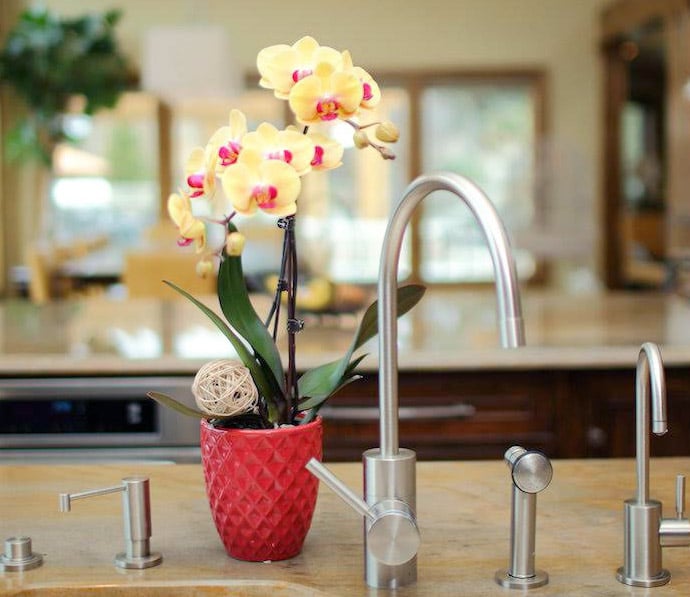
While your zinnias and other outdoor flowers may flourish during the long, sunny days of summer, your indoor plants will need a little extra care during this time, especially if you use an air conditioner.
But don't worry. With the right balance of a few key elements, your indoor plants will be just fine in rain or shine.
One of the most important steps for optimal indoor plant care is deciding on location.
These tropical plants are solar powered, but they prefer indirect light. Avoid keeping them too close to the windows, especially those facing south or west, or they could get a sunburn! If you do choose a window spot, make sure the light is filtered through a sheer curtain.
Remember Goldilocks? Indoor plants don't like temperatures that are too hot or too cold (kind of like humans). For best results, place your plant in a room that is consistently between 65 and 80 degrees Fahrenheit during the day, and between 55 and 65 degrees Fahrenheit during the night.
Here's some really cool news for all of the insomniacs out there: The best nighttime temperature range for orchids is also best for humans in terms of sleep! You may have heard that bright light in the evening disrupts melatonin production, but did you also know that being too hot while you sleep does the same thing? By keeping the thermostat at around 65 degrees at night, you and your plants will fare much better!
A sunny kitchen or adjacent dining room is one of the best places for an orchid to thrive. It's also a great way to show it off. Just be sure to keep it away from produce as the gas emitted by the ripening process can damage indoor plants.
Place your indoor plants away from your vents as cold air blowing directly on them can deprive them of necessary moisture. If their leaves start fading or wilting, the plant might be too close to an air conditioning vent.
Many indoor plants, such as orchids, are tropical and therefore thrive when humidity levels are between 55 and 75 percent.
If your windows fog frequently, that’s a sign the humidity in your home is too high. The easiest way to measure humidity is to buy a Hygrometer. You can find them in almost any home improvement store.
An easy DIY way to check if the humidity in a room is too low is to try this:
If moisture does not form on the outside of the glass, the air is too dry and you may need a humidifier.
If your indoor air is too dry, you can try regularly misting the leaves and watering the potting soil. This can keep your plant's immediate growing zone humid enough to survive. But be careful. Too much moisture encourages bacteria and fungal growth, which can lead to orchid diseases.
As you learn about indoor plant care for your specific plant babies, you’ll discover some of them may be more sensitive to cold air, temperature changes, and varying humidity levels—especially the small ones.
If you just have to crank up the AC during the summer months, consider protecting your indoor plants with glass.
For example, you can build a terrarium that allows you to view and enjoy the plants while keeping out colder temps and dry air. They’re pretty easy to make and can even be a fun project for you and your kids to do together.
For tips on how to keep your indoor plants thriving during the "dog days" of summer and all year long, check out our complete guide to orchid care.

Copyright Just Add Ice® Orchids 2023